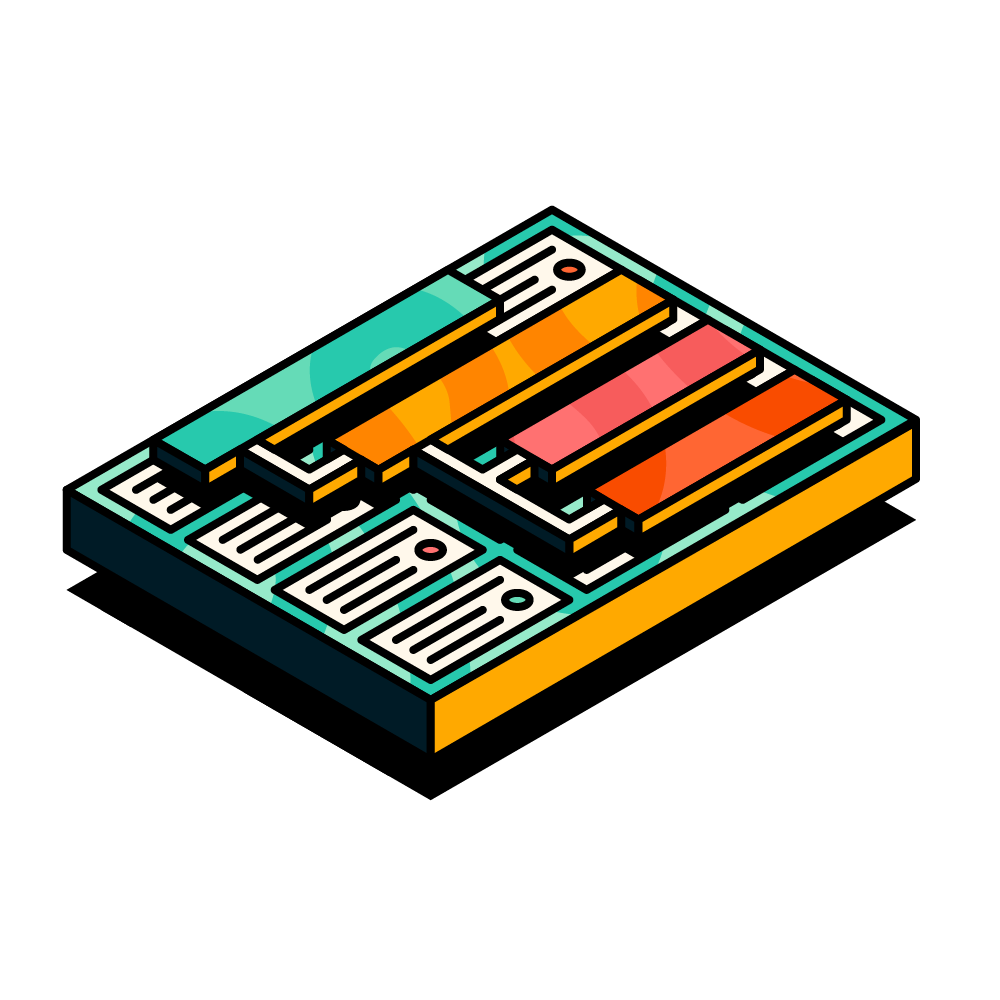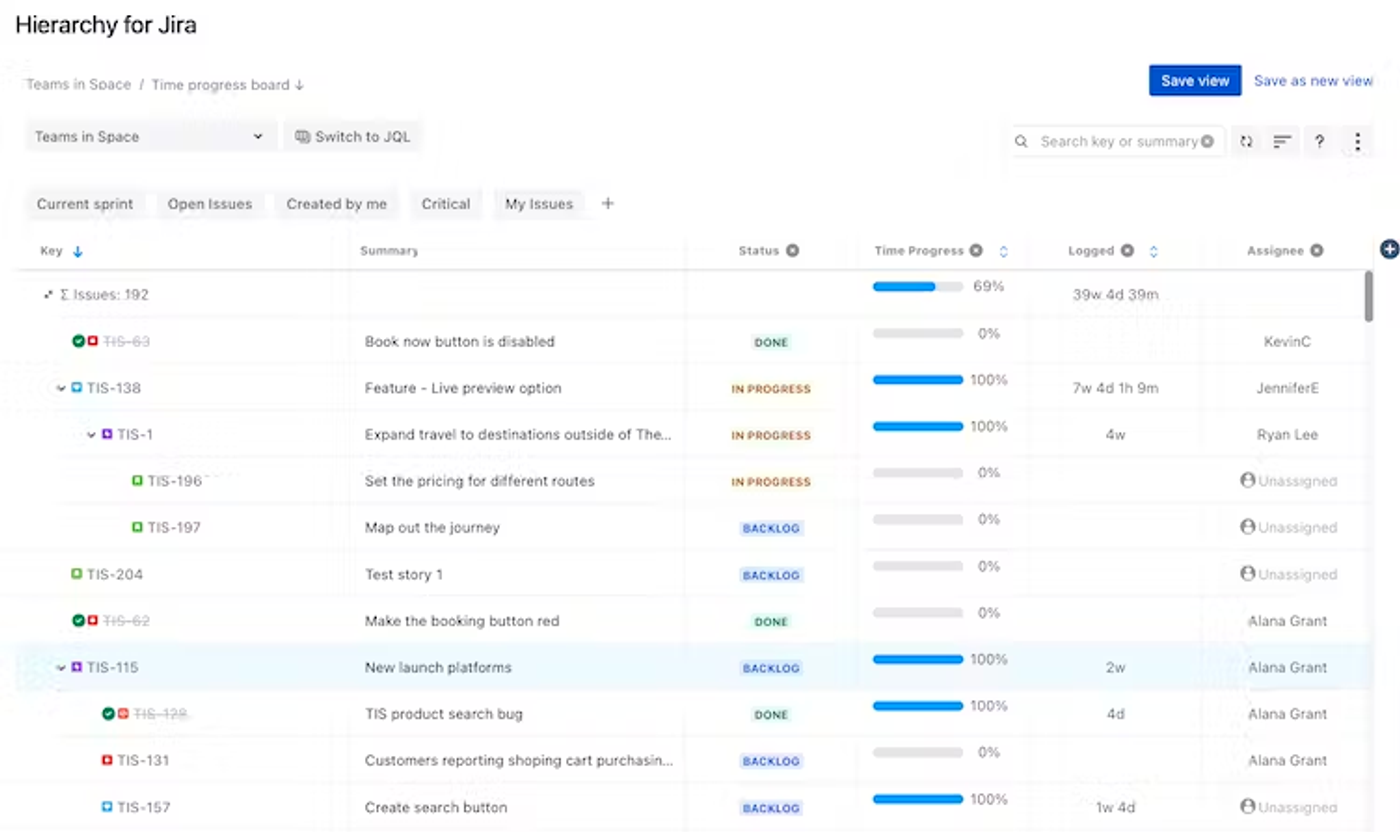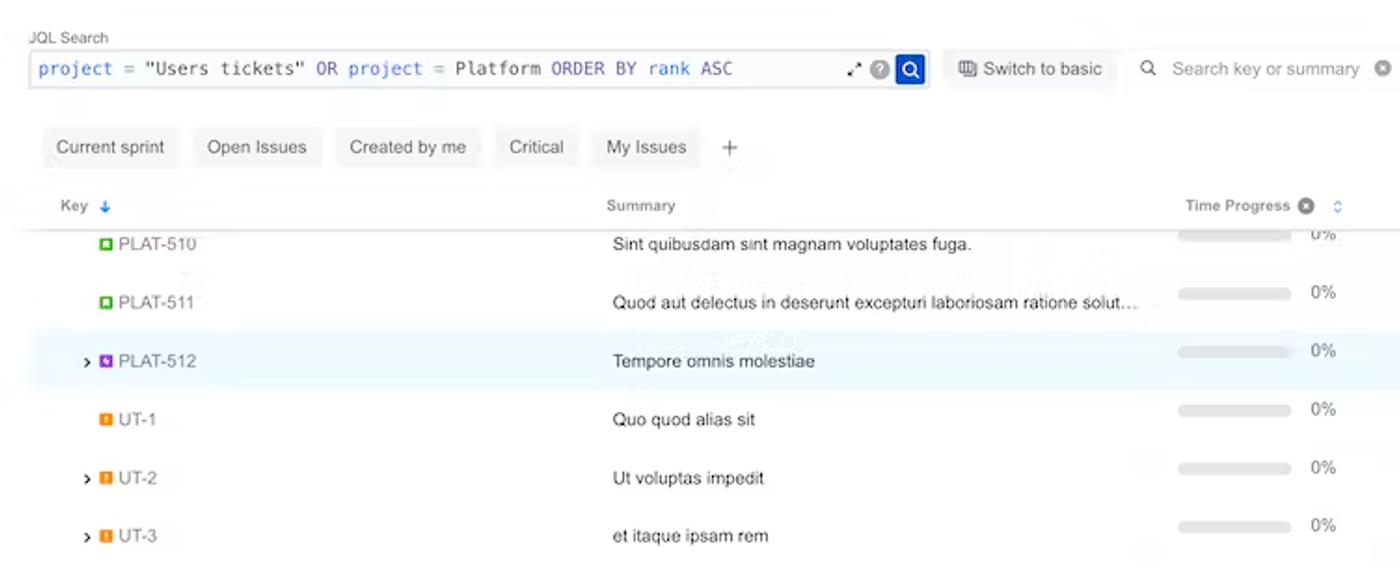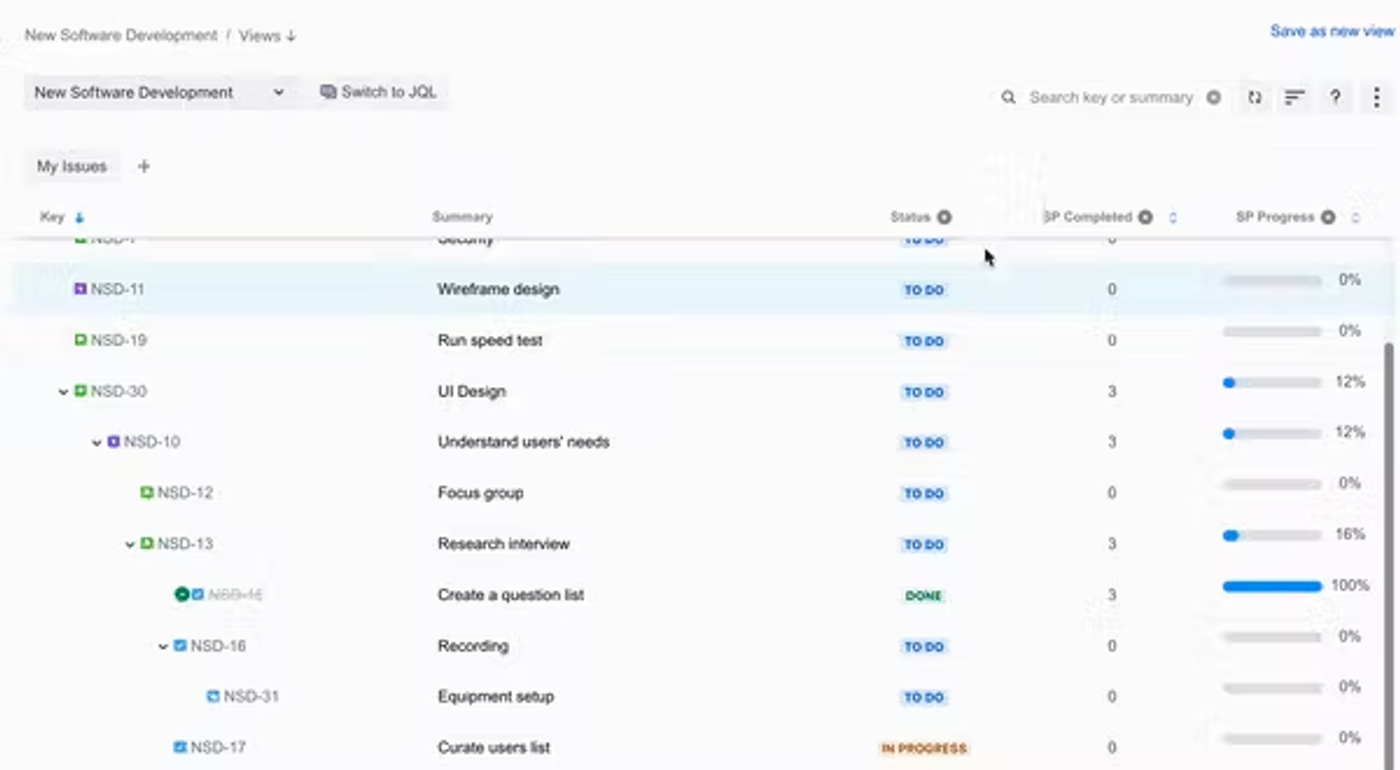3 ways to improve visibility in your Jira projects
Share on socials
3 ways to improve Jira project visibility

Selena Cass
13th February, 2024


Selena Cass
13th February, 2024
Jump to section
Jump to section
Poor visibility: spotting the symptoms
3 ways Hierarchy for Jira solves visibility problems
1. Make project goals and progress crystal clear for everyone
2. Promote better teamwork by avoiding silos
3. Identify and resolve problems early to avoid surprises
Wrapping up
Discover how you can use Hierarchy for Jira to get a complete picture of your Jira projects, for ultimate Jira project visibility.
You have the best team, an ideal mix of expertise and knowledge, and a healthy budget to boot. On top of all that, you're managing and tracking your entire project with Jira.
Although your team is working hard to complete tasks, you are still not seeing much progress towards your milestones. How could this be possible?
It could be that your team needs more project training or support. Perhaps your goals are too ambitious or unrealistic. Or maybe there's another factor at play that you haven't considered. Something that can be easy to overlook, but is vital to the success of your project.
Visibility.
In this post, we explore the impact poor visibility can have on project success. And, how by using Hierarchy for Jira you can get a complete picture of all your Jira projects, making it easier to plan, forecast and hit milestones. Every time.
Let's dive in.
First of all, how can you tell if visibility is an issue for your team and organisation?
Although your team is working hard to complete tasks, you are still not seeing much progress towards your milestones. How could this be possible?
It could be that your team needs more project training or support. Perhaps your goals are too ambitious or unrealistic. Or maybe there's another factor at play that you haven't considered. Something that can be easy to overlook, but is vital to the success of your project.
Visibility.
In this post, we explore the impact poor visibility can have on project success. And, how by using Hierarchy for Jira you can get a complete picture of all your Jira projects, making it easier to plan, forecast and hit milestones. Every time.
Let's dive in.
First of all, how can you tell if visibility is an issue for your team and organisation?
Poor visibility: spotting the symptoms
Besides the obvious issues like unexpected delays and missed deadlines, there are a few questions that can help to determine if poor visibility is negatively impacting your team.
Goals and progress are unclear
- Is every team's goals aligned with the company's overall goals?
- Is your team clear about the project's overall progress, what tasks they need to accomplish and when?
- Can you visualise how smaller tasks are linked to high-level initiatives and identify which tasks to prioritise?
It's challenging to work together
- Are team members constantly trying to find out the latest updates, progress, deliverables, and who is doing what?
- Does communication happen mostly within teams rather than across departments?
- Are teams unsure of who they should be collaborating with?
Surprises are common (and mostly unwanted!)
- Do delays in rollout and missed opportunities occur frequently?
- Do you and your team only find out about project dependencies when something goes wrong?
- Are changes to project requirements or scope often only revealed in crisis meetings?
Not feeling confident about your answers? Then visibility may be an issue.
So, the question is what can you do about it and how can Hierarchy for Jira help to enhance your project visibility?
3 ways Hierarchy for Jira solves visibility problems
1. Make project goals and progress crystal clear for everyone
The odds of achieving success are low when teams don't know or understand the project's goals and progress or they are continually blindsided by surprises.
By making it clear from the outset what the project aims to achieve, it becomes easier for teams to prioritise and understand how they can contribute to success. Having this insight will also help them to feel motivated and align their work with the project's goals.
How Hierarchy for Jira helps
Jira is great for tracking all your issues and project activities, but when it comes to getting hold of information across multiple projects or being able to see it all from a bird's eye view, it's challenging to say the least.

Hierarchy for Jira makes it easy to create a project structure that is easy to understand and follow. By making it easier to see how smaller tasks are linked to higher initiatives, you can trace up or down and make issue prioritisation.

This helps to increase Jira project visibility and ensure everyone is on the same page when it comes to the project goals. Additionally, it enables teams to measure progress using Estimate, ensuring that all work contributes to progress and no resources are wasted.

2. Improve teamwork by avoiding silos
At the team level, Jira can help teams keep track of all your day-to-day work, but there's no easy way to see what's going on around or above your team. As a result, you end up doing your own thing and before you know it silos take hold.
Having visibility into who is doing what in your organisation makes communication easier. When teams need specific information, they can contact the right person straight away without going back and forth with different teams.
Having visibility into who is doing what in your organisation makes communication easier. When teams need specific information, they can contact the right person straight away without going back and forth with different teams.
How Hierarchy for Jira helps
No more sifting through epics and issues to find what you need. Hierarchy for Jira gives you ultimate transparency, so you know who is working on what and which team they are part of.
As a team, you can look beyond your own scope of work and see if there are any dependencies you should be aware of. It's also easy to see what a task is made up of and who's responsible for what, which is a godsend if you're managing multiple projects at the same time.
As a team, you can look beyond your own scope of work and see if there are any dependencies you should be aware of. It's also easy to see what a task is made up of and who's responsible for what, which is a godsend if you're managing multiple projects at the same time.

3. Identify and resolve problems early to avoid surprises
Everything you need to know is right there in Jira. The problem is it can be hard to get your hands on it quickly. Or see how issues relate to each other to identify dependencies or spot bottlenecks.
By making it easy to see everything at a detailed level but also holistically, you can identify roadblocks early and solve problems quickly before they derail your project.
How Hierarchy for Jira helps
With Jira hierarchy, you can look at everything in a connected way to understand the relationships between issues and spot bottlenecks effortlessly. As a result, teams can identify issues quickly, resolve them efficiently, and make more informed decisions.

Furthermore, stakeholders can get an up-to-date view of the status and challenges of a project without having to wait for monthly reports or ask different teams. As a result, they'll know how things are progressing and will be less likely to form unrealistic expectations.
A clear view leads to fewer project headaches and happier teams
Hierarchy for Jira provides a clear view of all Jira issues. It also allows you and your team to see connections between them and identify who is responsible for what. With all issues organised into a clear, easy-to-navigate structure, it’s much easier to spot problems and dependencies early before they cause major headaches.
Best of all, it allows teams to work the way they want to and see how they are contributing to the bigger picture. Everyone can feel like they are playing their part in hitting those milestones with confidence, every time.
Best of all, it allows teams to work the way they want to and see how they are contributing to the bigger picture. Everyone can feel like they are playing their part in hitting those milestones with confidence, every time.
Ready to unlock visibility into your agile projects?
Try Hierarchy for Jira with a 30-day free trial
Written by

Selena Cass
As a senior content marketing consultant at Upscale, Selena thrives in the ever-changing world of technology. With over 20 years of experience, she has worked across diverse sectors and specialises in crafting engaging content that captures attention, showcases expertise, and drives business growth.
Atlassian